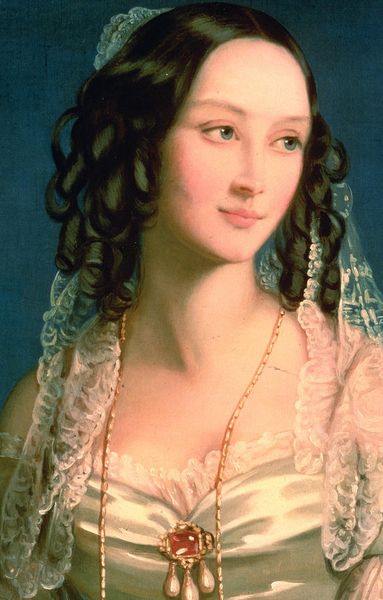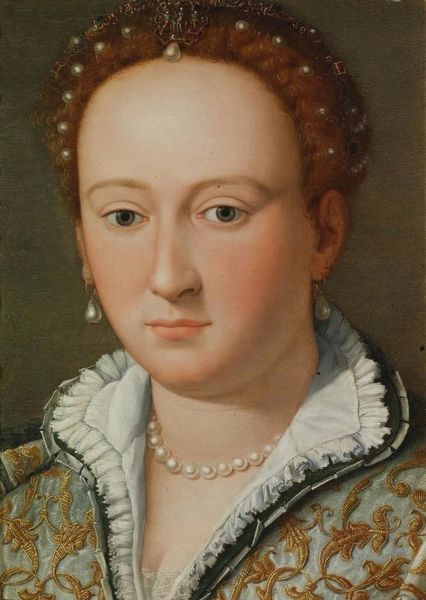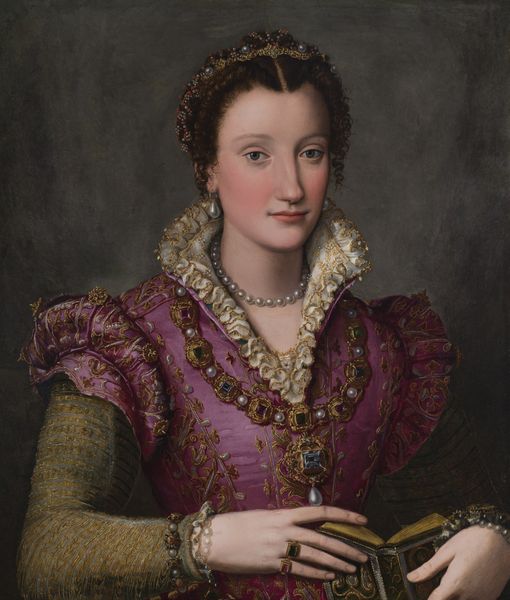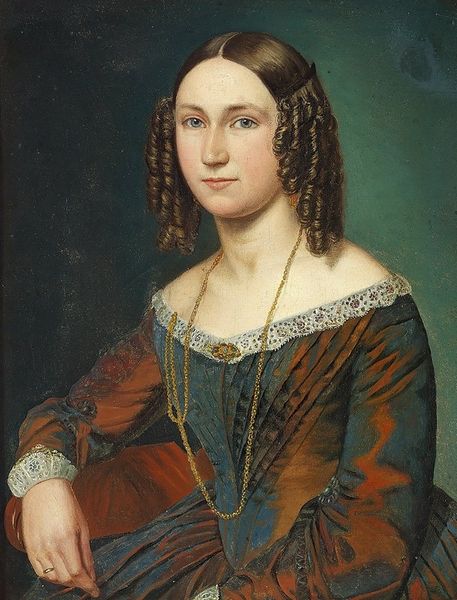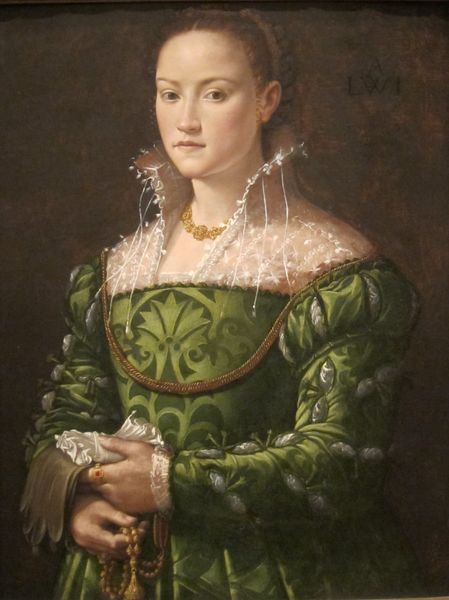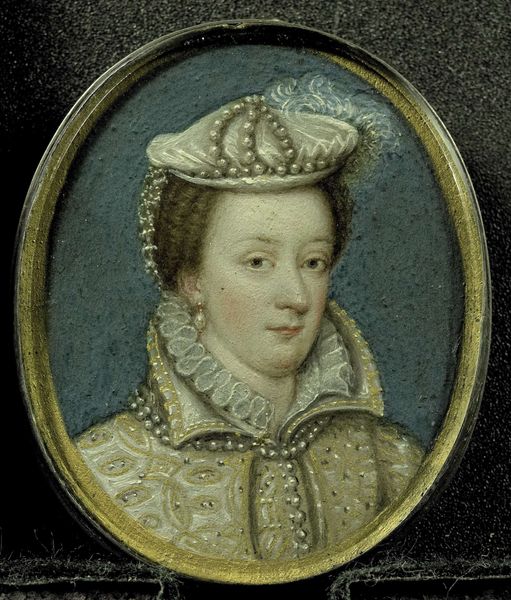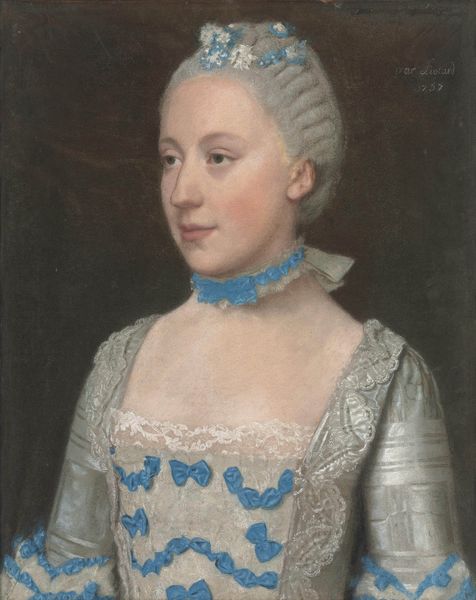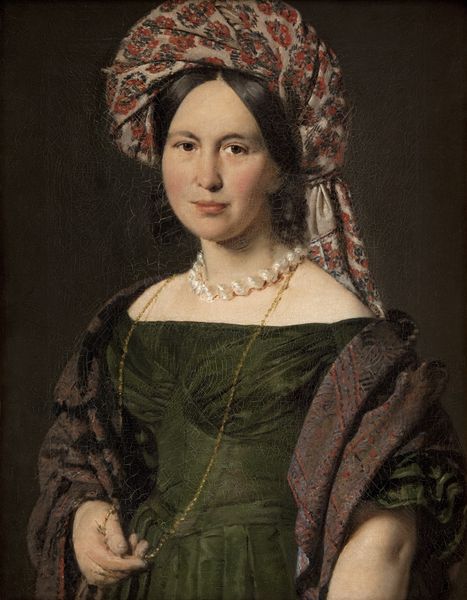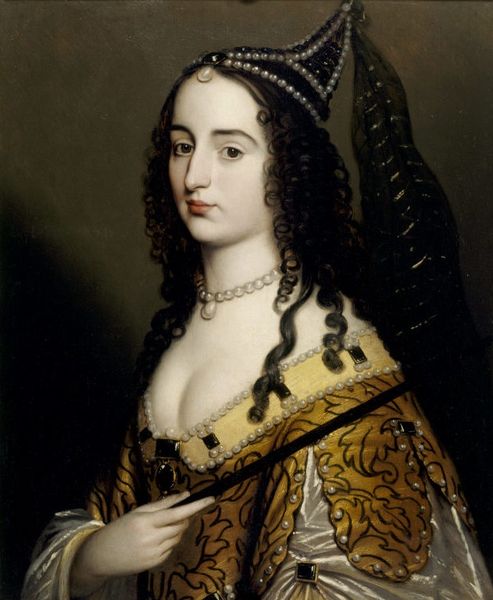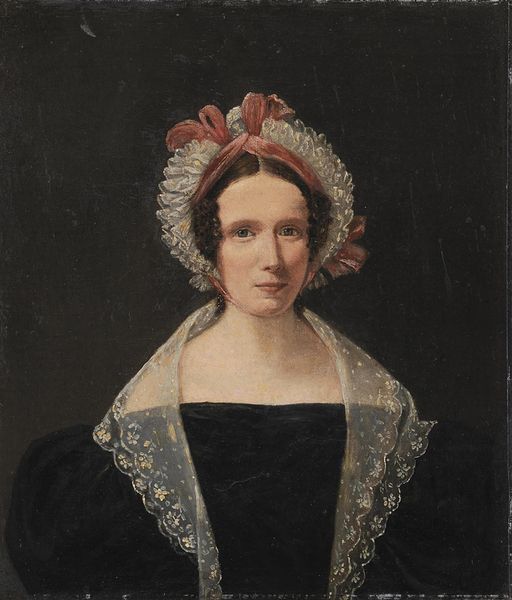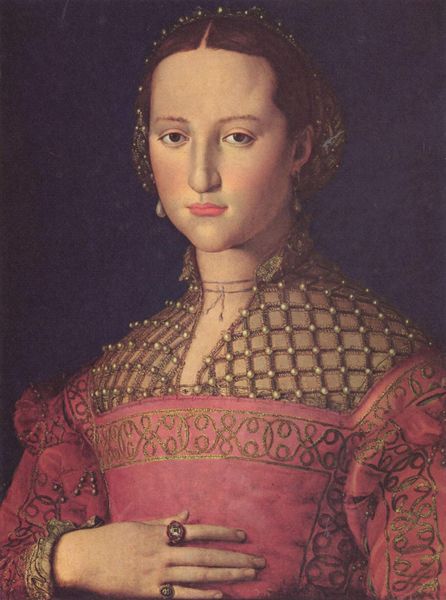
painting, oil-paint
#
portrait
#
painting
#
oil-paint
#
mannerism
#
academic-art
Copyright: Public domain
Curator: We're looking at Alessandro Allori's "Ritratto Di Donna," an oil on canvas painted in a distinctly Mannerist style. Editor: It has a certain cool detachment, doesn’t it? Her gaze doesn't quite meet ours, creating a sense of distance despite the clear detail. Curator: The craftsmanship here is undeniably meticulous. Consider the pearl adornments, each one likely hand-stitched. And the intricate ruff. These weren’t just artistic flourishes; they were products of intensive, specialized labor. The social context demanded such visible displays of wealth and status, channeled through elaborate, time-consuming processes. Editor: And what about the sitter herself? She projects the composed and virtuous look so sought-after during that time, evidenced through details like her pearl-accented net cap and elegant necklace. Note also how the large, elaborate pendant on her chest draws our eyes, becoming a strong cultural marker linked to a time when public image weighed heavily on women. Curator: Absolutely. But let's dig a little deeper into the materiality. Allori, or his workshop assistants, would have been carefully layering glazes of oil paint, imported pigments possibly coming from far afield, to build up this luminescent flesh tone, further heightened through sharp tonal contrast in surrounding elements, for example in the sitter's attire. Think of the process behind that stark color difference between her bright face and the dark background. These choices are telling. Editor: It suggests, at least to me, a careful visual messaging. A contrast between mortality and grace, mirrored also in the delicate lace against her unadorned face. These choices can signify deeper societal beliefs about beauty and propriety during the Renaissance. Curator: Perhaps, though to truly see these portraits, it's important we think about the means and forces involved in the painting's physical realization. The raw material value would equal months if not years worth of labor, the very notion of 'portraiture' then inherently entwined with consumption and access. Editor: Fair enough. Either way, both of our views help unravel the fascinating threads embedded within the picture. Curator: Indeed. Thinking about it all, perhaps we appreciate these period pieces more deeply by recognizing both the artistic practice, and its intrinsic material constraints.
Comments
No comments
Be the first to comment and join the conversation on the ultimate creative platform.
